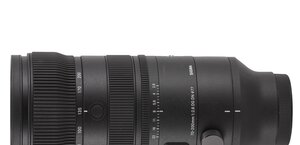Sigma A 28 mm f/1.4 DG HSM
4. Image resolution
Let’s check how the Sigma A 28 mm f/1.4 DG HSM compares; its results in the frame centre and on the edge presents a graph shown below.
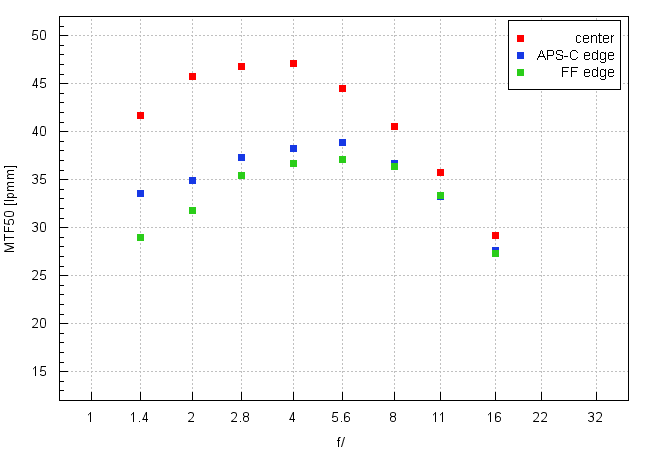
Please Support UsIf you enjoy our reviews and articles, and you want us to continue our work please, support our website by donating through PayPal. The funds are going to be used for paying our editorial team, renting servers, and equipping our testing studio; only that way we will be able to continue providing you interesting content for free. |
- - - - - - - - - - - - - - - - - - - - - - - - - - - - - - - - - - - - - - - - - - - - - - - -
Its performance is brilliant already up from the maximum relative aperture, with results getting to a very high level of almost 42 lpmm; then the resolution increases to over 45 lpmm by f/2.0, and the lens reaches its maximum by f/4.0 with a value near 47 lpmm.
Compared to the Sigma A 1.4/35 the tested lens fares better by f/1.4 and f/2.0. From the f/2.8 aperture onwards the results of both Art devices are very much alike, almost the same within the margin of error. In the aperture range from f/1.4 to f/4.0 both these lenses perform noticeably better than the Sigma A 1.4/24 – a graph below shows a comparison between all these three when it comes to resolution.
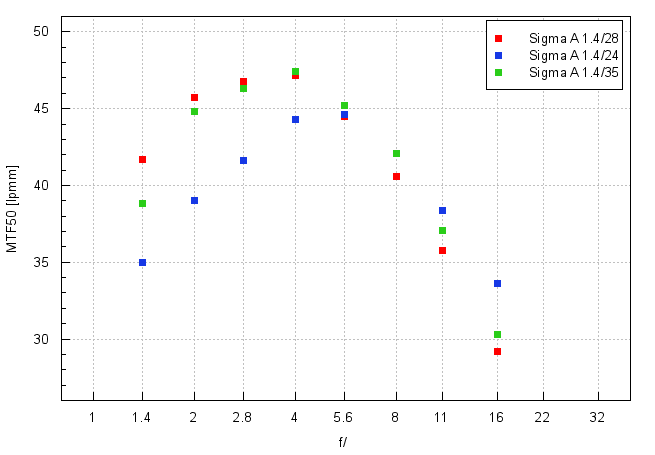
After the duel between the Sigmas let’s check how the tested model compares against its rivals, as our web portal already features tests of two new 1.4/28 class instruments, namely the Zeiss Otus and the Nikkor. The Sigma fares weaker than the big Otus, as its results were higher, reaching over 49 lpmm by f/2.8 and f/4.0. Still, the Sigma managed to get a better resolution value at the maximum relative aperture, a quite interesting thing to notice. When you compare the tested lens to the Nikkor, the situation is similar. By f/4.0 the rival reaches a level of over 48 lpmm so higher than that of the Sigma, but at the maximum relative aperture and by f/2.0 the Sigma prevails.
Now let’s deal with the Sigma’s A 1.4/28 performance outside the centre of the frame. On the edge of the APS-C/DX sensor, even at the maximum relative aperture, you get fully useful images with MTFs reaching 33.5 lpmm. On stronger stopping down you are able to reach even 39 lpmm. These are excellent values but once again slightly worse than those achieved by the Otus and the Nikkor.
When it comes to physical dimensions and its weight the Sigma A 1.4/28 is bigger than the 35 and the 24 mm Art series instruments. It seems that fact was able to guarantee a good performance on the edge of the frame, anyway the lens fares noticeably better than its brothers at that place.
The only weaker point we found on the edge of full frame by the maximum relative aperture where the resolution, measured by us, amounted to less than 29 lpmm. On stopping down the aperture to f/1.6-1.8 the image becomes useful and it can be called good in the wide aperture range from f/2.8 to f/8.0. A similar weak point was observed during the test of the big Otus and the smaller Nikkor too. On the edge of full frame the Sigma is once again slightly worse than the Otus but this time it performs better than the Nikkor AF-S 1.4/28.
The Sigma A 28 mm f/1.4 DG HSM proved to be a better lens than the much-praised Sigma A 1.4/35. In the frame centre the advantage of the newer and more expensive model is noticeable mainly near f/1.4 and f/2.0 but on the edge of the frame, no matter whether on the APS-C or full frame, the 28 mm instruments clearly prevails over the 24 mm and 35 mm models from the Art line. What’s more, the tested Sigma managed to compete on equal terms with the distinctly bigger and more expensive Zeiss Otus 1.4/28.
At the end of this chapter, traditionally, we present crops taken from photo of our resolution testing charts, saved as JPEG files.
| Canon 5D MkIII, JPEG, 28 mm, f/1.4 |
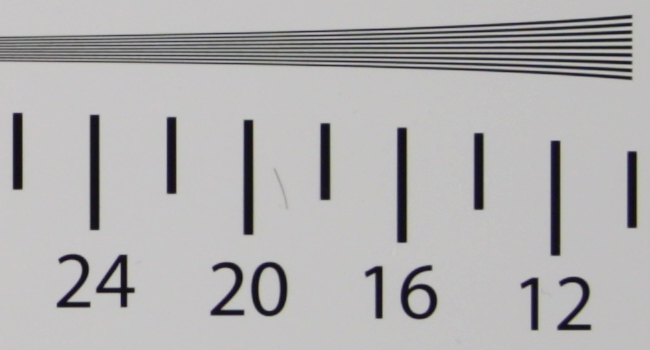 |
| Canon 5D MkIII, JPEG, 28 mm, f/4.0 |
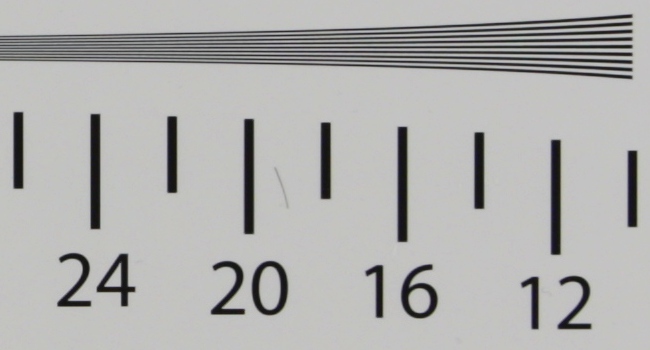 |




